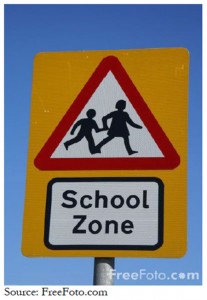The ultimate challenge of efforts to change DC school boundaries and admission policies — which haven’t been reviewed comprehensively since 1968 — is to meet the hopes of parents who want better choices for their children while allaying the fears some parents have about losing access to their current great school.
The good news is that two provisions of the new student reassignment proposals would increase access for low-income students to Pre-Kindergarten and to high-demand K-12 schools that are out-of-boundary — without greatly limiting access for other families. These and the other boundary-change issues will be the subject of a DC Council hearing tomorrow.
The suggested revisions would change the lottery for getting into out-of-boundary schools by giving priority for low-income students to attend the District’s most affluent — and typically high-performing — K-12 schools. The preference would be used to fill spaces at high-performing schools after all in-boundary students are accommodated, as well as out-of-boundary students with siblings in the school. About 20 DCPS schools would meet the requirements for this at-risk student preference. The proposals also recommend that elementary schools set aside 10 percent of their seats for out-of-boundary students, with a similar policy phased in for students entering the 6th and 9th grades. This could mean that high-demand schools have to think through how to serve all in-boundary, by right, students, as well as meet the new set-aside requirements, but out-of-boundary students already make up well over 10 percent of enrollment in most DC schools.
Research shows that promoting socio-economic diversity in schools improves outcomes for low-income students without adversely affecting middle class students, as long as a core of middle class children attend the school. The out-of-boundary preference for at-risk students to attend wealthier schools can help maintain socio-economic diversity in our city’s most high-demand schools. If such an approach is adopted, it will be important for the District to also consider new transportation policies to ensure that students can actually take advantage of access to schools that may be across town.
A second proposal aims to improve neighborhood access to early childhood education. Currently, children are admitted to Pre-Kindergarten through the lottery process, without a guaranteed seat at a child’s in-boundary school. The new proposals would give children who live near high-poverty DCPS schools (those that receive Title I funds) access by right to Pre-Kindergarten 3 and 4 slots in their zoned DCPS school. This makes sense for families who would prefer to send their young children to schools close to their home, and may help alleviate the struggle of lengthy wait lists for early childhood education slots at many DC schools.
Final student reassignment plans will be seen in September, with any changes planned to take effect in the 2015-2016 school year. Residents can tune into the Council’s Roundtable on School Boundaries at 11 a.m. on Thursday in Room 412 of the Wilson Building.
To print a copy of today’s blog, click here.

